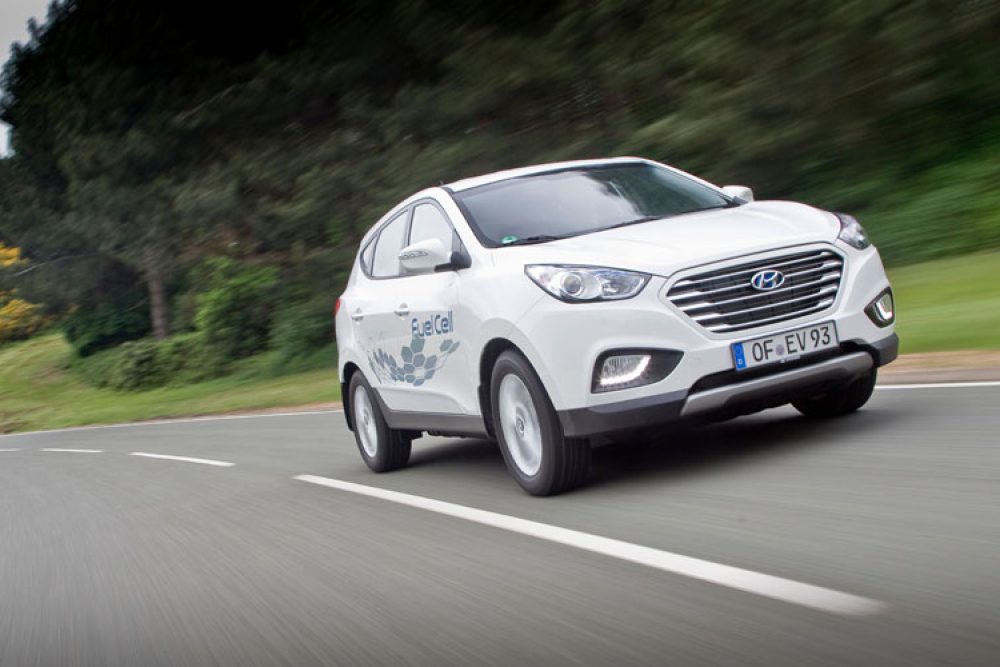THE puddle of water trickling from beneath the Hyundai ix35 Fuel Cell just about summed it up.
The hydrogen fuelled Hyundai ix35 Fuel Cell produces just H20 from its exhaust.
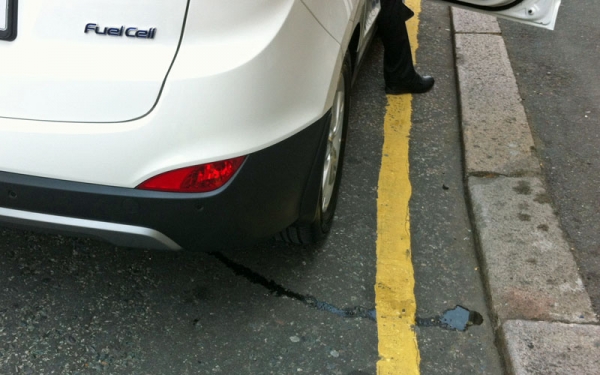
Water to you and me.
Apart from that water, this was pretty much standard Hyundai SUV fare. Apart from the engine. (Actually the trickle of water was probably from the condenser unit rather than the exhaust where the water is expelled as vapour. But you get my drift.)
Instead of an engine the Hyundai ix35 Fuel Cell uses a fuel cell stack creating electrical charge from the compressed hydrogen that is run through it, which in turn feeds the electric motor.
Inside there’s little difference from the standard ix35.
There’s a button you push to start; a foot operated handbrake…and, ummm, that’s it.
Hushed and quiet. Quiet and hushed. Otherwise select drive from the autobox and off you go.
Hyundai ix35 Fuel Cell
- Power: 136hp
- Torque: 300Nm
- 0-62mph: 12.5 seconds
- Range: 369 miles
- Click here for more on the launch of the ix35.
For like electric vehicles (EVs), there is no engine noise, no vibration – just effortless acceleration in a quiet and peaceful forward motion.
I drove the Hyundai ix35 Fuel Cell around the streets of west London, and it was just like driving an ordinary car. You don’t really have to adapt. Except to the lack of noise.
And this is really one of the great plus points about hydrogen fuel cell cars: you don’t have to adapt your lifestyle to the car.
Filling up requires a nozzle, which you insert into a conventional fuel filler. You lock it shut so it’s sealed and it will fill up (at 700 bar pressure) in three minutes. And it’s clean: you won’t need those plastic gloves dispensed at fuel filling stations to protect your hands from the oily grease of the normal petrol or diesel pump. Then off you go.
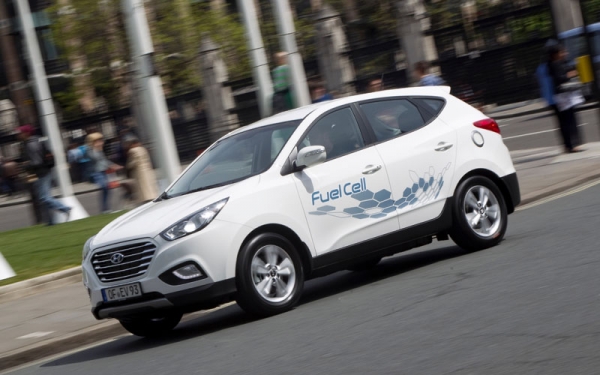
There’s no hooking up to a charging point, or looping an extension lead around your house or out of your flat’s window to charge your EV.
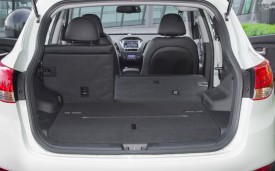
It really is very fuss free.
There are some drawbacks.
The hydrogen fuel tank sits below the boot area and under the rear seats – there are two to minimise the boot area intrusion. However, there is some loss of space: luggage capacity is 436 litres compared to the standard Hyundai ix35’s 591 litres.
And then there’s the refuelling stations. Or lack of them. But by 2015, when the car goes into full production in right hand drive – there should be 65 fuelling stations around London, major cities, the M4 and M1 corridors. Hyundai says the range is up to 400 miles.
Finally, the cost. We just don’t know, but there will be a premium on the standard ix35. Certainly they will be expensive, but Hyundai is in talks with government over grants and point out that costs will reduce as price goes up.
But as a new technology, the Hyundai ix35 Fuel Cell is a mighty fine car. Just like the standard ix35 in fact.
But without the emissions. Or noise.
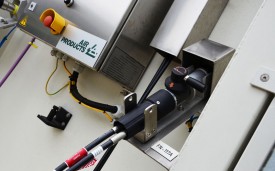
Is it dangerous to refuel?
Hydrogen has a graphically worrying past thanks to horrifying images of the Hindenburg airship disaster.
But today hydrogen is kept under high pressure with a series of relief leaf valves should pressure build up.
According to Emma Guthrie from Air Products, a company developing the hydrogen refuelling infrastructure, in a disaster situation, hydrogen is safer than petrol.
“Hydrogen rises into the air,” she says. “Petrol tends to stay on the ground and spread.”
Meanwhile, production of ‘clean’ hydrogen with a series of modular and scalable refuelling stations is developing. Hydrogen is produced on site with an electrolysis unit and storage elements for the hydrogen.
A history of Hyundai fuel cell development
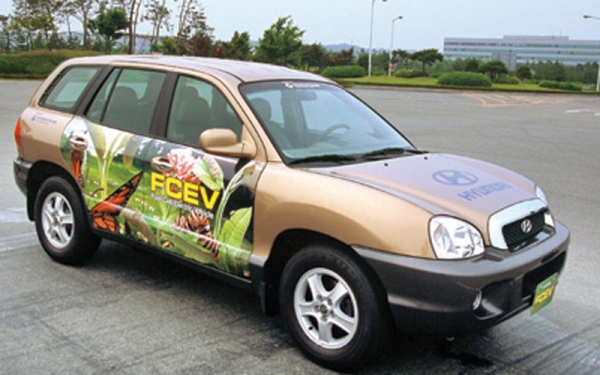
Hyundai has been developing the fuel cell for the last 15 years.
It started with the Santa Fe in 2001. This could manage 99 miles on a tank and had a top speed of 77mph.
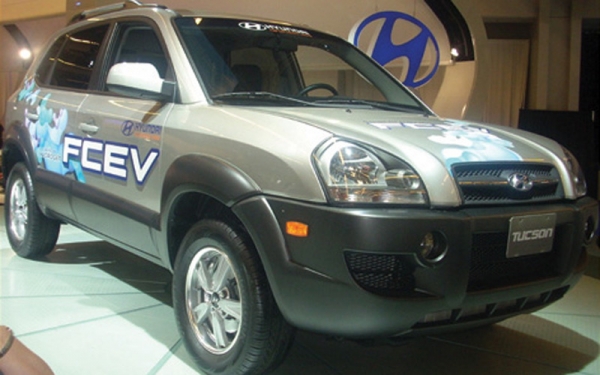
Hyundai followed this with the Tucson fuel cell electric vehicle in 2005 with further developments in 2007. It could reach over 90mph and had a 186 mile range.
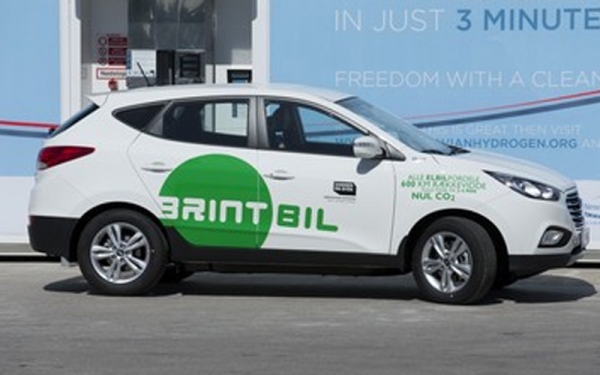
In 2010 Hyundai produced the ix35 Fuel Cell Electric Vehicle with 100mph capability and 400 mile driving range.
June 2013: delivered first assembly line-produced ix35 Fuel Cell vehicles to the City of Copenhagen in Denmark – 15 in total.

